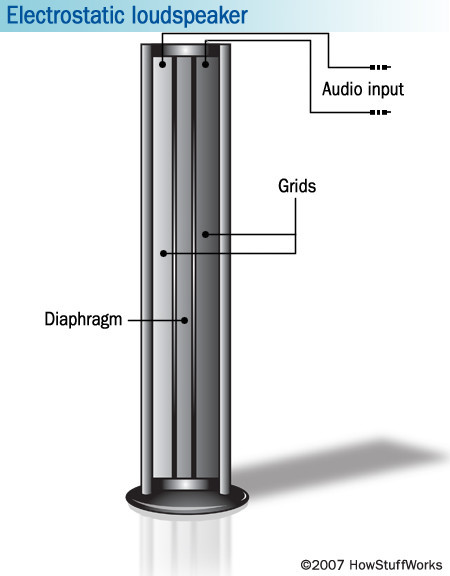Sonoma One Electrostatic Headphone System impresses with transparency and detail, unlike any other headphones we’ve ever heard.
Upon a recent visit to Audio Affair’s wonderful showroom in the heart of Birmingham’s Custard Factory, your author was eagerly introduced to the exciting new headphones by Hi-Res audio experts, Sonoma. Undoubtedly the most expensive headphones this reviewer has ever tested, would the technology justify the price tag?
Hype without substance? Or, a genuine advancement in transducer technology? Join us dear reader to find out!
The Electrostatic Advantage
The concept of electrostatic transducers is not new; as far back as 1957 Quad launched their very first electrostatic loudspeaker, descendants of which are still available now as part of the Quad ESL range. The electrostatic headphone, however, has always been a much more rarified creature.
So, why electrostatic transducers, and what are electrostatic transducers anyway?
Most loudspeakers and headphones use the moving coil principle (the diagram below shows a typical moving coil transducer). A cone, be that a speaker cone or a headphone diaphragm is attached to a coil of wire which in turn is held within the magnetic field of a permanent magnet. When a current is applied to the coil, the cone moves!
The downside to a moving coil transducer is that the mass of the cone and the coil adds inertia to the assembly. The practical downside can be that transients become compressed, and the sound can become coloured or even distorted. Whilst almost a century of constant refinement and development has given us remarkably good moving coil designs, the inherent design disadvantages remain.
An electrostatic transducer represents an extremely elegant solution to this problem. The relatively heavy mass of a transducer and voice coil assembly is replaced with an extremely thin and light diaphragm (see the below diagram). A very high voltage charge is applied to the diaphragm.
When an audio signal is applied to the grids or stators, the diaphragm moves. Thanks to its extremely light weight and low inertia, it is able to respond to the tiniest of input signals with great sensitivity and reproduce transients with unmatched accuracy.
Sonoma One – The Modern Electrostatic Headphone
The Sonoma One headphones utilise the absolute cutting edge in modern Electrostatic design. Utilising Warwick Audio Technologies HPEL (High Precision Electrostatic Laminate) electrostatic transducer technology, the Sonoma One promises greater consistency than ever before possible.
The cutting-edge technology isn’t limited to the transducers, however; Sonoma began as developers of high-end DSD recording systems, which as a young apprentice sound engineer, your author was lucky enough to experience. The Sonoma system created some of the greatest digital recordings these ears have ever heard.
Taking their experience of DSP technology, the Sonoma One headphones employ a combined external DAC & Energizer. This unit contains both a high end, ESS Sabre powered USB DAC, cutting edge DSP, as well as the necessary high voltage energizer and Class-A, single-ended amplification.
Now that we know all about the technology involved, what do the Sonoma One headphones actually sound like?
A Unique Sonic Experience
Cuing up Propaganda’s 1980s sonic masterpiece Dream Within a Dream, the Sonoma One Headphones reveal a unique character, quite unlike any other headphones your author has heard before. The high-frequency extension and presentation is something very special indeed; airy and open as well as being both smooth and crisp and detailed.
Daft Punk’s Lose Yourself to Dance really highlights the extra-wide frequency extremes these headphones are capable of.
The deep, rumbly bass of the track, almost feels like the headphones are about to shake off one’s head. Hand claps reverberate around the stereo extremes in super wide stereo.
Lang Lang’s beautiful piano performance of Chopin’s Nocturne in C Sharp Minor reveals the Sonoma One’s true raison d’etre: acoustic instruments. Dynamics are incredibly linear; the frequency content of each note consistent across all volume dynamics whilst upper register notes are crystalline without ever being brittle or harsh. The detail delivered is so great one can hear the breaths and shuffling of the pianist. Remarkable!
A 24bit 96kHz recording of Luciano Pavarotti performing La donne é mobile from Verdi’s Rigoletto is goose-bump inducing. The orchestral accompaniment is percussive and lively with a beautiful “bloom” from the lower register of the string section. All through it, Pavarotti’s voice cuts cleanly and precisely without ever being harsh.
If there’s one downside of the Sonoma One headphones, it’s that they don’t “crank” like traditional dynamic designs do. Having become accustomed to the way that moving coil designs “pump”, listeners of dance music and aggressive electronics may find the experience somewhat clinical.
For those who adore acoustic and classical music, however, I can hand on heart think of no better headphones available. The clean, open, wide bandwidth coupled to an utterly uncoloured presentation is the closest to the fabled “acoustic window” I have heard a pair of headphones deliver.
With the Sonoma One Electrostatic Headphone System, Sonoma has succeeded in delivering an utterly unique listening experience.





